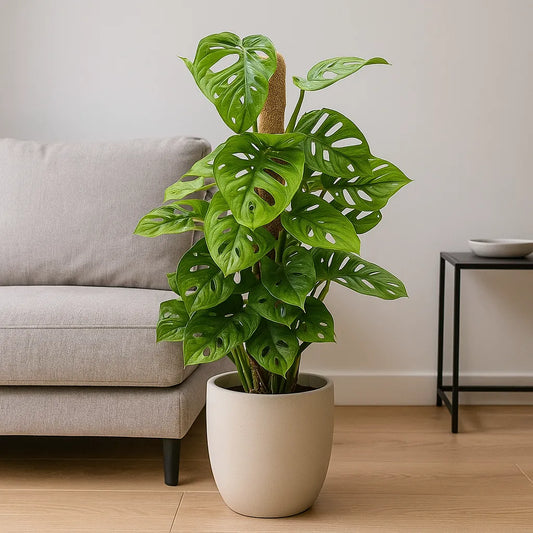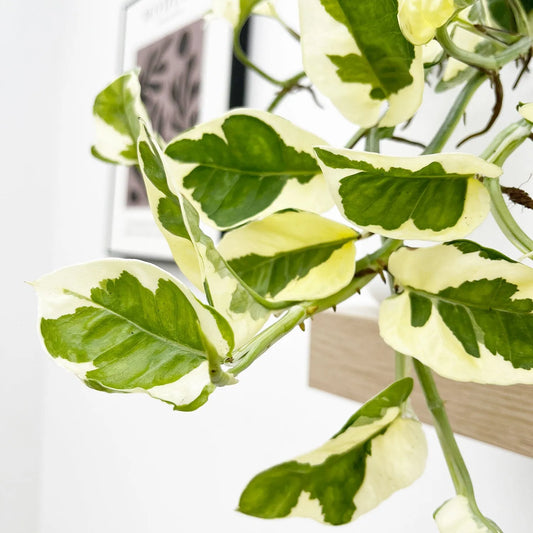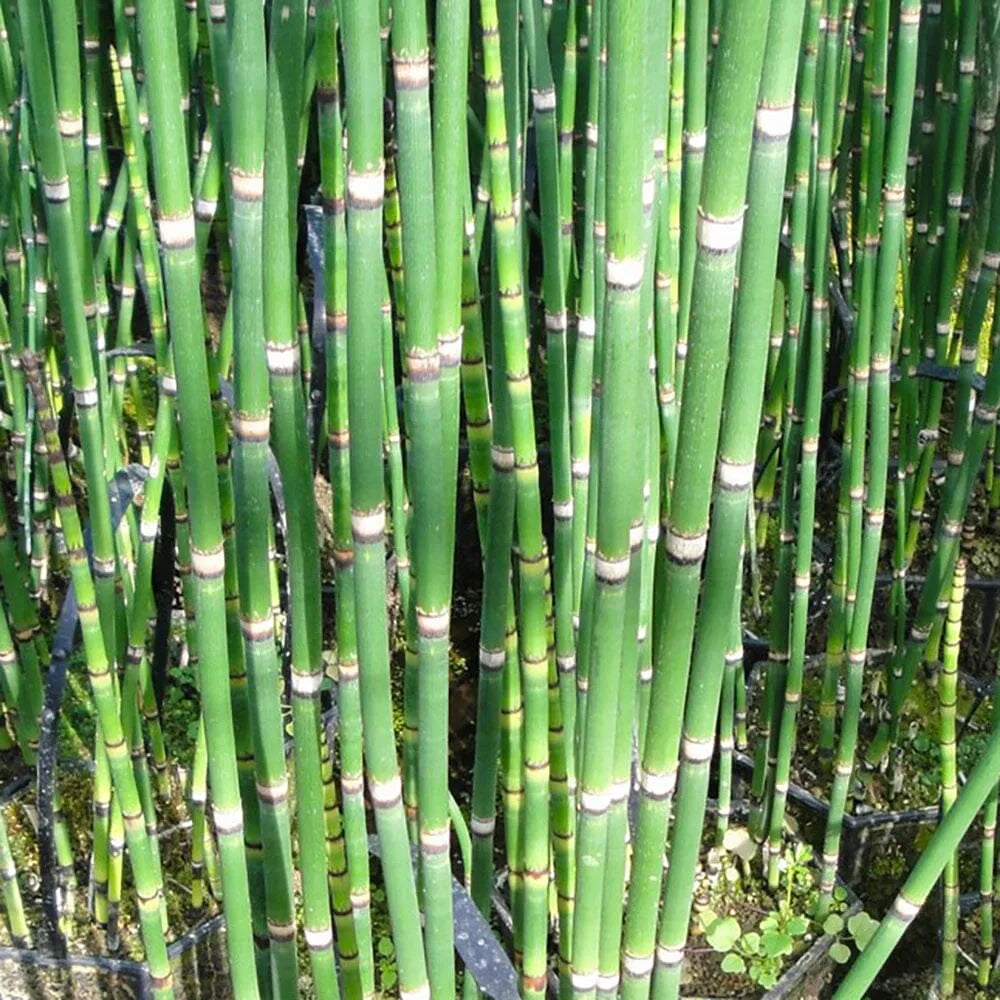
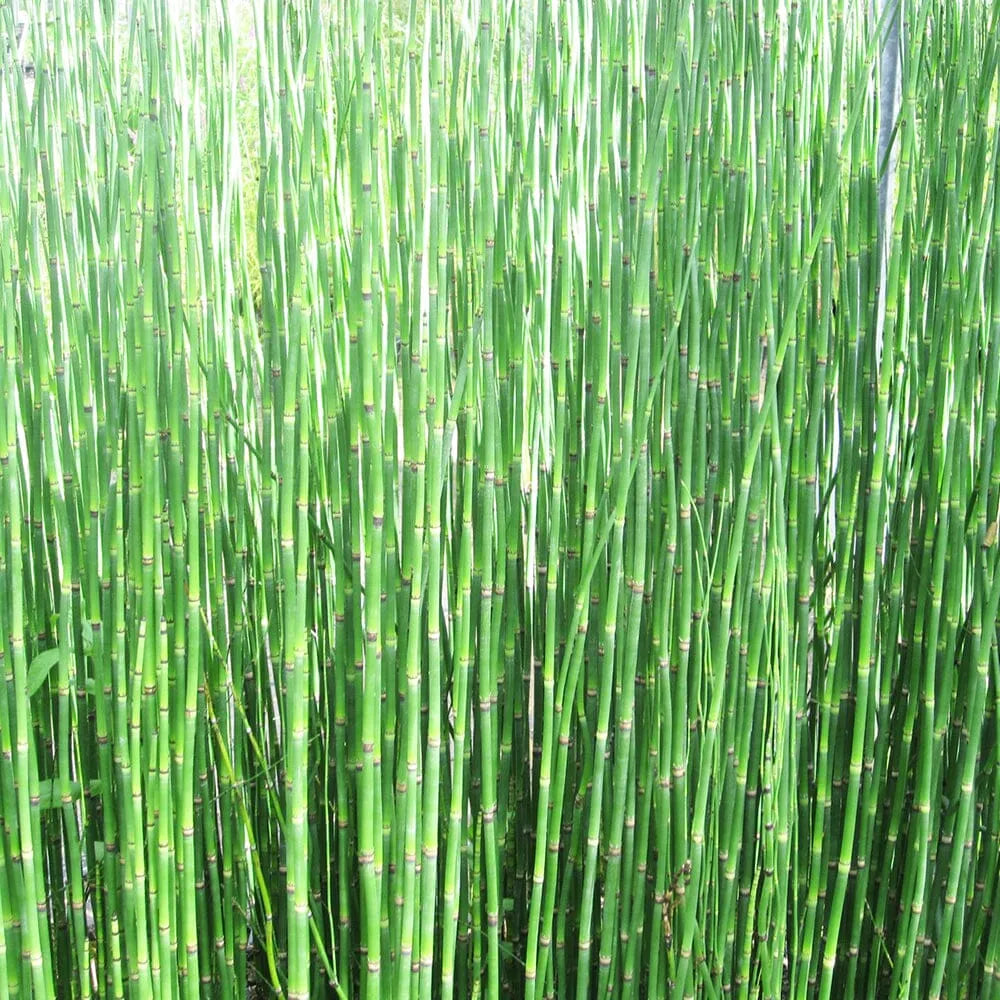
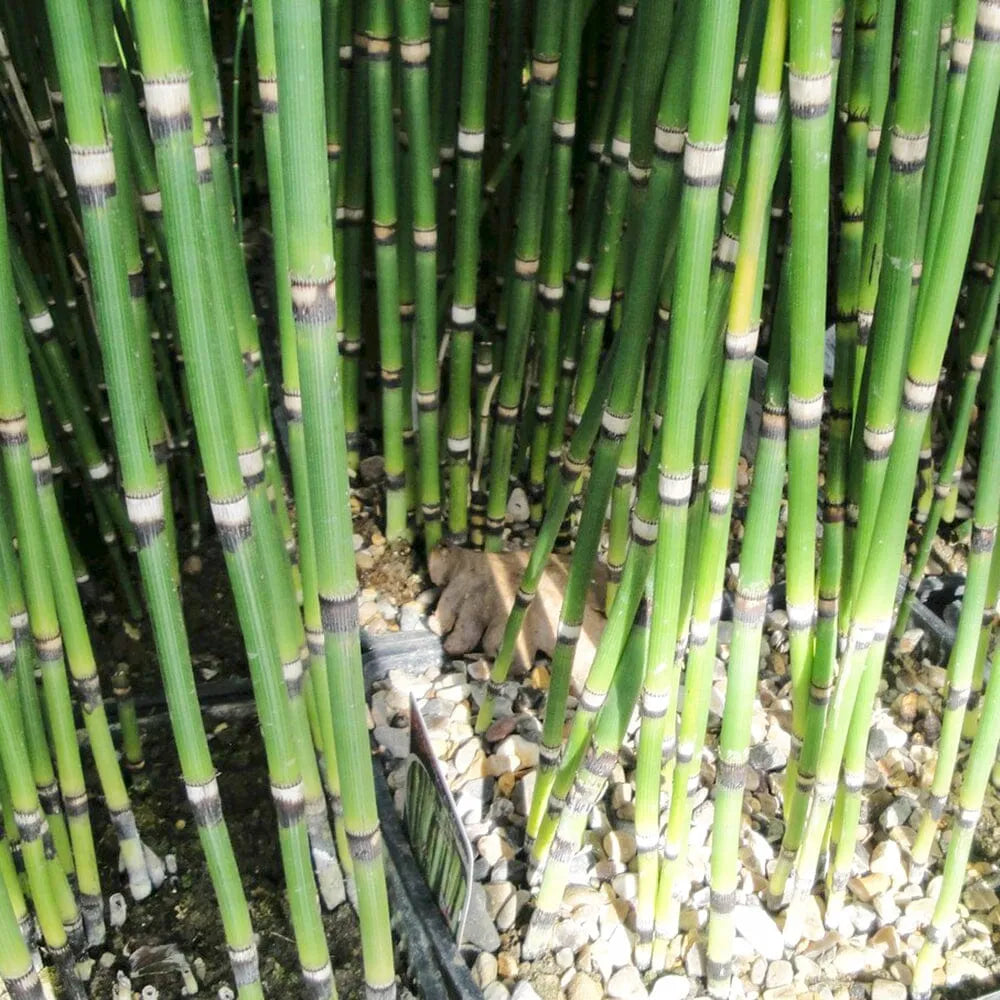
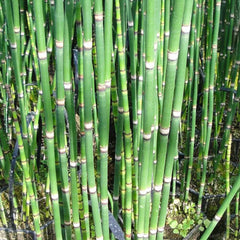
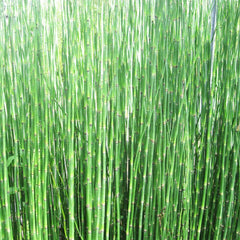
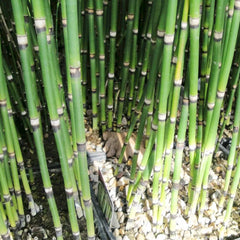
Equisetum Hyemale Aquatic Pond Plant - Scouring Rush
- £17.99
- £17.99
- Unit price
- per
Live Delivery Guarantee
At Plants for all Seasons, we stand behind the quality and vitality of every plant we deliver, which is why we proudly offer a Live Delivery Guarantee. This commitment means that we guarantee your plants will arrive at your doorstep in healthy, thriving condition. We understand the importance of receiving your plants in the best possible state, ready to enhance your space from the moment they arrive. With Plants for all Seasons's Live Delivery Guarantee, you can shop with complete peace of mind, knowing that your green investments are protected from our nursery to your doorstep.
30 Days Returns
Due to the sensitive and breakable nature of our products, it's understandable that damages may occur despite our meticulous packaging methods. If you find that your plant or pot has arrived in a less than satisfactory condition, please reach out to us at hello@plantsforallseasons.co.uk within a month of your delivery date. When contacting us, please provide your order reference, alongside a photo clearly showing the damaged item and its packaging, including the delivery label. We are committed to resolving such issues by offering a refund or a replacement, depending on the availability of the item in question.
We are unable to accept returns that are not related to damage because plants are inherently perishable and delicate. It's also worth noting that the plant you receive may slightly differ from the images displayed on our website. This variation is natural, given that each plant is unique and subject to seasonal growth changes.
Safe and Secure Delivery
At Plants for all Seasons, we recognise the critical role our courier partners play in ensuring the safe and secure delivery of your plants. We collaborate exclusively with leading courier services, renowned for their reliability and exceptional handling practices, to ensure your plants arrive in perfect condition. Our partners are carefully selected based on their commitment to timely deliveries and their proven track record in transporting delicate items with the utmost care.
Bespoke Eco Packaging
At Plants for all Seasons, our commitment to the environment extends to every aspect of our operations, especially in how we deliver your plants. We take pride in our bespoke, eco-friendly packaging, meticulously designed for the safe transport of live plants. Our innovative packaging solutions are crafted from sustainable materials, ensuring that your plants are not only secure but also that their journey from our nursery to your home treads lightly on the earth. This thoughtful approach minimises stress on the plants and reduces waste, aligning with our mission to promote a greener, more sustainable future.
Free Delivery Over £100
At Plants for all Seasons, we're delighted to offer our customers an exclusive perk: free delivery on all orders over £100. No matter how many plants you fall in love with, if your total reaches £100, the delivery is on us. This offer is our way of saying thank you for choosing us for your greenery needs and to make it easier for you to welcome more of nature’s beauty into your home without worrying about additional costs. Our commitment to providing value doesn't stop at our plant selection; it extends to ensuring that your chosen foliage arrives at your doorstep with care and precision, completely free of charge for qualifying orders. Enjoy the convenience of selecting from our wide range of plants, safe in the knowledge that your delivery costs are covered when you meet the threshold. It’s our way of helping you create your ideal green space, seamlessly and affordably.
Delivered within 3-4 working days
Equisetum hyemale, commonly known as Horsetail or Scouring Rush, is a perennial plant that belongs to the Equisetaceae family. It is a unique and primitive plant with a distinctive appearance. Here's a detailed description and care guide for Equisetum hyemale:
Description:
Equisetum hyemale is characterized by its hollow, jointed stems that resemble bamboo or reeds. The stems can reach heights of 2-4 feet (60-120 cm) or even taller. They are green and segmented, with ridges running vertically along the length. The stems are mostly leafless, but small scale-like leaves can be found in whorls at the joints. In the spring, Equisetum hyemale produces cone-like structures at the tips of the stems that contain spores. The plant's unique appearance and architectural structure make it an interesting addition to water gardens, ponds, or as a decorative accent in garden landscapes.
Care Guide:
Lighting: Equisetum hyemale thrives in full sun to partial shade. It prefers a location with at least 4-6 hours of direct sunlight per day. However, it can tolerate some shade, especially during the hottest part of the day. Insufficient light may cause the plant to become leggy or have less vibrant growth.
Water: Equisetum hyemale is a water-loving plant and thrives in consistently moist to wet soil conditions. It naturally occurs in wetlands, marshes, and along water edges. Ensure the soil remains consistently moist but avoid waterlogging. Water deeply when the top inch of soil feels dry to the touch.
Soil: Equisetum hyemale can grow in a variety of soil types, including clay, loam, or sandy soil. It prefers fertile soil that retains moisture well. If growing in containers, use a well-draining potting mix or a mixture of loam and sand.
Temperature: Equisetum hyemale is adaptable to a range of temperatures. It is hardy in USDA hardiness zones 3-11. It can tolerate both cold and warm climates. Protect the plant from extreme temperatures and frost. In colder regions, the plant may die back during winter and re-emerge in spring.
Fertilizer: Equisetum hyemale does not require heavy fertilization. It can obtain nutrients from the surrounding soil. However, incorporating a balanced, slow-release fertilizer into the soil during the growing season can provide additional nutrients. Follow the manufacturer's instructions for dosage and application methods.
Maintenance: Equisetum hyemale is a low-maintenance plant. Regular maintenance involves removing any dead or yellowed stems to maintain a neat appearance. Cut back the plant to the ground in early spring to promote fresh growth. Be cautious when handling the plant as it can be abrasive and cause skin irritation.
Propagation: Equisetum hyemale can be propagated through division or by collecting and sowing its spores. Division is best done in spring when new growth appears. Carefully separate the clumps, ensuring each division has healthy rhizomes and stems, and replant them in suitable soil or containers. Spores can be collected from mature cone-like structures and sown in a suitable growing medium.
Pests and Diseases: Equisetum hyemale is generally resistant to pests and diseases. However, it may occasionally attract aphids or be susceptible to fungal diseases if growing conditions are unfavorable. Monitor the plant for any signs of pests or diseases and take appropriate measures if necessary.
By following these care guidelines, you can enjoy the unique and architectural appearance of Equisetum hyemale in your water gardens, ponds, or garden landscapes. Adjust the care routine based on your specific growing conditions and monitor the plant for any signs of stress, pests, or diseases. With proper care, Equisetum hyemale can provide a natural and eye-catching element, adding interest and texture to your outdoor spaces.
Upright and Fresh: Our innovative design ensures that your plants remain upright and fresh during transit. Specially engineered compartments and supports within the box prevent movement and damage, so your plants arrive in perfect condition.
100% Recyclable: Our plant boxes are fully recyclable, ensuring that after they have served their purpose, they can be responsibly disposed of without harming the planet.
Made from Recycled Materials: Sustainability is at the core of our values. That’s why our packaging is crafted from recycled materials, reducing waste and promoting a circular economy.
Winter Shipping: We offer additional heat packs in winter to keep your plants nice and warm on their travels. Add one heat pack per plant when checking out in winter months.
By choosing our products, you are not only enhancing your home with beautiful plants but also contributing to a greener, more sustainable future
Check out our YouTube video to see exactly how we pack for safe delivery.
Benefits of UK-Grown Aquatic Plants
Climate Adaptation: Our aquatic plants are nurtured in conditions similar to those in your water features, making them better suited to withstand local weather patterns and seasonal changes.
Sustainability: By choosing UK-grown aquatic plants, you support local growers and reduce the environmental impact associated with long-distance transportation.
Quality and Freshness: Growing our aquatic plants in the UK allows us to maintain strict quality control, ensuring that each plant is healthy, vibrant, and ready to enhance your water features.
Our Commitment to Excellence
Our experienced growers are dedicated to cultivating a wide variety of aquatic plants, from hardy water lilies to delicate submerged species. Each plant is carefully tended to, ensuring it reaches you in optimal condition.
Whether you're looking to add visual interest, improve water quality, or create a balanced ecosystem, our UK-grown aquatic plants are the perfect choice. Trust Plants for all Seasons for quality plants that will bring beauty and life to your water features for years to come.
Non-Consumable: Please note that our plants are intended for ornamental purposes only unless specifically stated as edible. Ensure you check product descriptions carefully if you are looking for edible varieties.
Variable Heights: The height of our plants can vary by approximately +/- 10%. This natural fluctuation ensures you receive a unique and healthy specimen.
Plant Pot Sizes: Pot sizes may vary by approximately +/- 1cm. To ensure a proper fit, we recommend selecting a decorative pot that is 1-2cm larger than the stated plant pot size. For instance, if you purchase a plant in a 17cm pot, a 18 - 19cm decorative pot would be ideal.
Oxygenating Pond Plants
View all Oxygenating Pond Plants- From £9.99
- From £9.99
- Unit price
- per
- From £9.99
- From £9.99
- Unit price
- per
- From £9.99
- From £9.99
- Unit price
- per
- From £9.99
- From £9.99
- Unit price
- per
- From £9.99
- From £9.99
- Unit price
- per
- From £9.99
- From £9.99
- Unit price
- per
- From £9.99
- From £9.99
- Unit price
- per
- From £9.99
- From £9.99
- Unit price
- per
- From £9.99
- From £9.99
- Unit price
- per
- From £9.99
- From £9.99
- Unit price
- per
- From £9.99
- From £9.99
- Unit price
- per
- From £9.99
- From £9.99
- Unit price
- per
- From £9.99
- From £9.99
- Unit price
- per
- From £9.99
- From £9.99
- Unit price
- per
- From £9.99
- From £9.99
- Unit price
- per
Marginal Pond Plants
View all Marginal Pond Plants- From £9.99
- From £9.99
- Unit price
- per
- From £9.99
- From £9.99
- Unit price
- per
- From £9.99
- From £9.99
- Unit price
- per
- From £9.99
- From £9.99
- Unit price
- per
- From £9.99
- From £9.99
- Unit price
- per
- From £9.99
- From £9.99
- Unit price
- per
- From £9.99
- From £9.99
- Unit price
- per
- From £9.99
- From £9.99
- Unit price
- per
- From £9.99
- From £9.99
- Unit price
- per
- From £9.99
- From £9.99
- Unit price
- per
- From £9.99
- From £9.99
- Unit price
- per
- From £9.99
- From £9.99
- Unit price
- per
- From £9.99
- From £9.99
- Unit price
- per
- From £9.99
- From £9.99
- Unit price
- per
- From £9.99
- From £9.99
- Unit price
- per
Surrounding Pond Plants
View all Surrounding Pond Plants- £19.99
- £19.99
- Unit price
- per
- £19.99
- £19.99
- Unit price
- per
- £19.99
- £19.99
- Unit price
- per
- £19.99
- £19.99
- Unit price
- per
- £19.99
- £19.99
- Unit price
- per
- £19.99
- £19.99
- Unit price
- per
- £19.99
- £19.99
- Unit price
- per
- £19.99
- £19.99
- Unit price
- per
- £19.99
- £19.99
- Unit price
- per
- £19.99
- £19.99
- Unit price
- per
- £19.99
- £19.99
- Unit price
- per
- From £12.99
- From £12.99
- Unit price
- per
- Choosing a selection results in a full page refresh.


